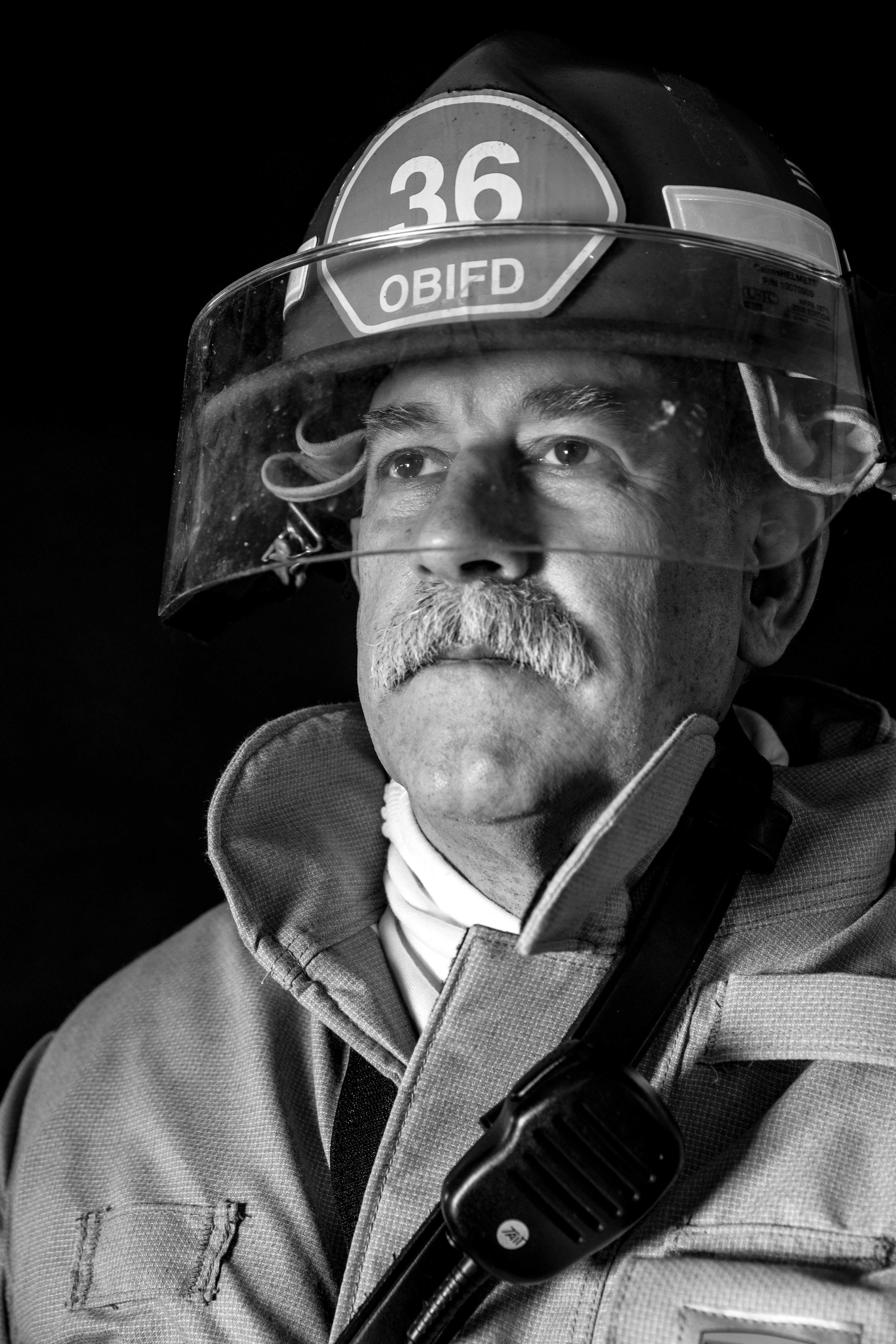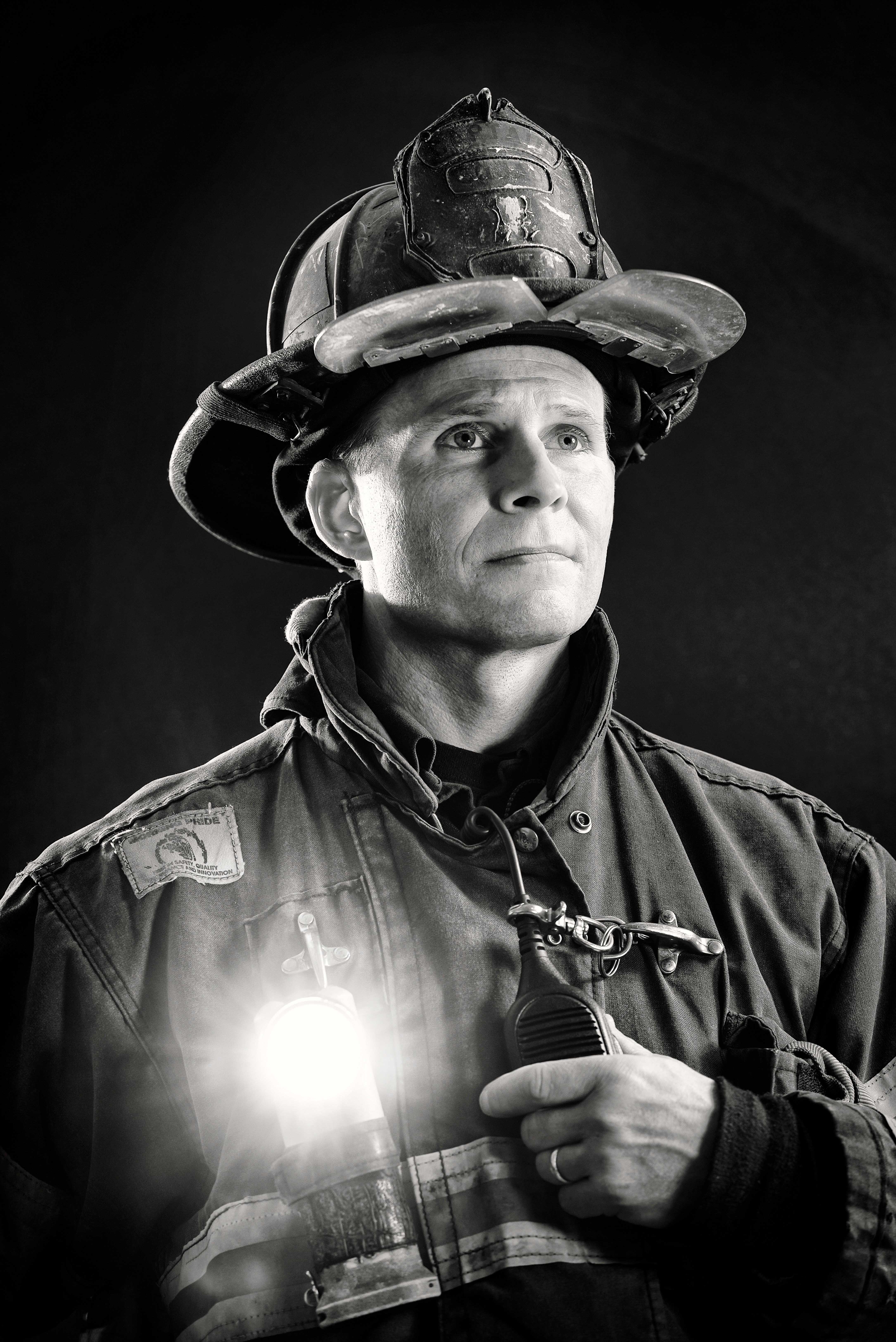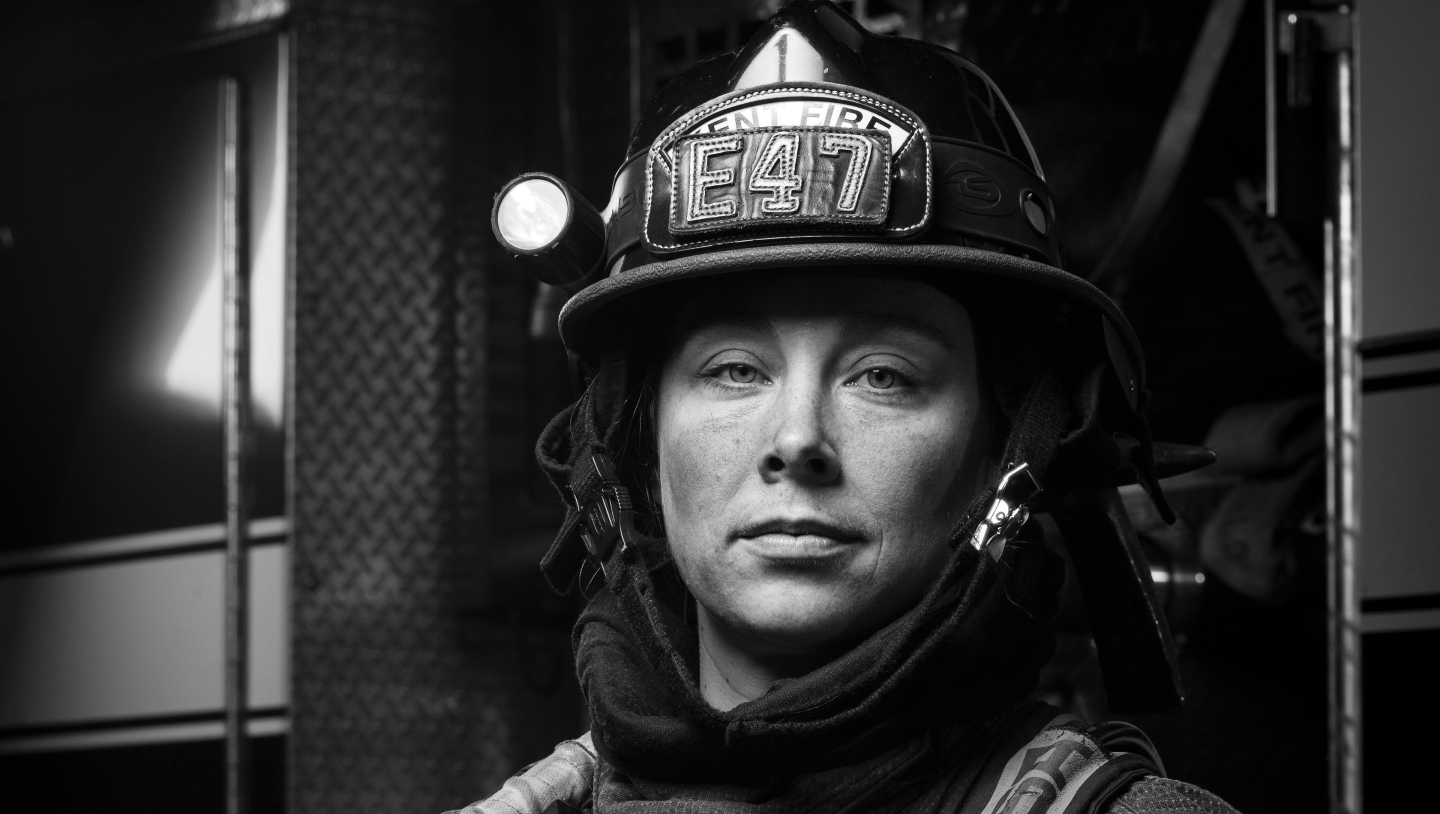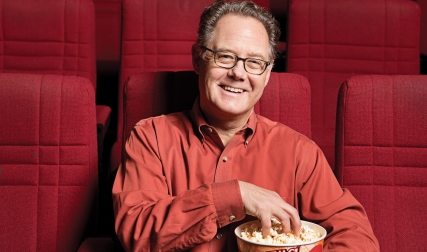Caitlin Corey ’06
Kent, Washington
When Corey arrives at work, the first thing she does is sniff the air in the engine bay. “If you walk in and smell smoke, there’s one part of you that’s jealous,” she says. “But there’s another big part of you that wants to hear every detail.”
Corey is an EMT, rescue swimmer and “provisional engineer”—meaning she operates water pumps and drives a fire engine she calls a “$1-million giant tool box.”
Across the Kent fire district, patches of blackened ground and charred skeletons of evergreens spot the shoulders of the roads. After a summer that saw ash drifting from a Canadian wildfire to Seattle, autumn wildfires in Washington caused the state to declare a state of emergency. The fire destruction was staggering. Even the sky appeared to ignite. Months later, most of the state’s fires have been extinguished, but the black fields and forests won’t fully re-green until spring.
Corey’s base station, Station 77, is quiet and clean—a decontamination station where hazardous materials are removed from firefighters’ gear and clothing. It feels a long way from the torrid fires that raged across hundreds of thousands of acres in the Pacific Northwest last year. Such dramatic threats, though, paired with an earnest desire to help, are what brought Corey to the fire service six years ago, and she knows this is where she’ll stay. Fighting fires for a living is “trying to coordinate chaos,” Corey says. “It’s such a dynamic job, a purpose-driven life. It’s easy to fall in love with it.”
Of the more than 200 firefighters in her department, Corey is one of only nine women—and accustomed to being something of a rarity. “This is a very large, old ship that takes a while and a lot of work to turn,” Corey says of her profession. She’s echoing an adage that says firefighting is 150 years of tradition unimpeded by progress. But she’s more concerned with the health risks of the job.
“It’s such a dynamic job, a purpose-driven life.”
Framed pictures of fallen firefighters, most of whom died from cancer and heart disease, line the walls of Station 77. “There are health concerns for sure,” says Corey, who is on her third shift back from maternity leave after giving birth to her first child. “When you’re single, you can take all the risks in the world—string yourself absolutely thin—and at the end of the day it doesn’t cost anyone anything, it’s doing what you want to do.” It’s good to be back, she says, but her perspective has changed: “Things are a little different now. As far as I’m concerned, I’ve got more than a house fire to live for.”
Art Howe ’76
Harpswell, Maine
A fire is a rapidly evolving instability. A firefighter must both contain the damage of what is happening and predict how a fire will evolve. “When I pull up to a building, I’m less concerned about where the fire is and more concerned about where it is going,” says Howe, a firefighter for more than four decades. Firefighting “is like a Rolodex, and you’ve got about three to five seconds to run to that Rolodex with 100 or 1,000 different factors you’re trying to spin. It’s organized chaos, the fire is changing, the list is endless in terms of what you should be thinking about. You’ve got seconds to come up with a plan and execute it. And you’d better be right.”

In 1974, the Hanover Fire Department recruited Dartmouth students to work fire shifts in exchange for room and board at the station. Howe volunteered. Forty-four years later, he’s fire administrator for the town of Harpswell and has worked every position from firefighter to chief in eight departments across five states.
Through the decades Howe has seen improvements in safety standards, building codes and firefighting equipment. But the primary materials of combustion have changed from wood and cotton to objects of our “synthetic society,” he says, such as polyester, rayon, acetates, vinyl, plastics and petroleum-based furnishings. These materials have higher burning points, but when they do catch fire, they burn hotter and faster than simple compounds, producing thicker, more toxic smoke—and temperatures up to 700 degrees hotter than fires 50 years ago.
With improved gear, firefighters go deeper into fires than they did in the 1970s. When Howe first started, he was taught to withdraw when his ears singed and blistered. Today, firefighters wear thick hoods to protect their ears, inhibiting their well-honed sense of danger. Howe worries about this unintended consequence. “We’re not doing a great job of teaching firefighters to read fire and smoke, to understand what those signs and symptoms tell us about how fast it’s burning and how hot it is inside,” he says.
Trends in firefighting mirror other social patterns. The more well-to-do an area is, Howe says, the more likely its homes will be better built and have smoke detectors and sprinklers. The National Fire Prevention Association noted in its 2016 statistics that states with the highest fire death rates have correspondingly higher percentages of poverty and adults who did not finish high school. “Do people have the financial ability to build a more fire-resistant home?” asks Howe. “Are they employed? Do they have children? What are the demographics? What does the culture say about the importance of fire prevention?”
“You’ve got seconds to come up with a plan and execute it.”
While identifying patterns and improving system response is part of his job, he notes that each call is an intimate, individual event. “There’s a lot of satisfaction in the small things—squeezing someone’s hand in the back of the ambulance or carrying someone out of a fire,” Howe says. “It’s a very confidential, personal experience. It’s the opportunity to make someone’s worst day a lot better or a whole lot less bad.”
Phil Gibbs ’81
New York City
“I could never say you look forward to a fire, but it is really exciting,” says Gibbs, who worked 20 years as a firefighter before retiring in 2010. “Once you get to a fire and it’s really hot inside, or you’re not quite sure where you are, or the fire suddenly gets really big, or something crashes near you or bursts into flames or bursts into bigger flames, it’s exciting. I’m not saying I’m not afraid, that’s for sure. There are lots of scary times.”
In 1988, Gibbs held a marketing job with Avis Rent-a-Car when he and a fireman friend embarked on a road trip to Alaska. They stopped at firehouses along the way in Manitoba, Saskatchewan, Anchorage and Fairbanks. These northern departments had outdoor hot showers that firefighters used to melt frozen hose spray off their uniforms. “The firemen were incredibly welcoming, gave us places to stay and food, and changed the oil in our car,” Gibbs says. “It was very different from the corporate world, that’s for sure.” Gibbs quit his job with Avis and never looked back.
“It was probably harder to get into the New York City Fire Department than it was to get into Dartmouth.”
In 1990, he joined the New York City Fire Department, first working as a fireman at Manhattan’s Engine 40 station and later as a fire marshal in the Bronx. “It was probably harder to get into the New York City Fire Department than it was to get into Dartmouth,” he says.
On the morning of September 11, 2001, Gibbs was working at the Bronx Fire Marshal’s Office, a station built when horses still pulled fire engines. The first report of a plane crashing into the World Trade Center led to confusion—and then a rush of adrenaline. “We didn’t know what was going to happen later on. We didn’t know, really, what had happened,” he says. “I don’t want to sound callous, but a crash into a skyscraper—as awful as it is, it’s also exciting. You have to go put the fire out and help people, and to see the whole thing was unusual but interesting.” New York City firefighters haven’t been the same since. “It changed the feeling,” says Gibbs. “It was pretty strange, pretty surreal.”
When Gibbs brings up his career at Dartmouth reunions, he gets unusual reactions. “Most people aren’t really sure they heard what I said,” he says. “It’s completely off their radar. They think I was a volunteer fireman once in a while or something.” Despite the differences between Dartmouth and the fire service, Gibbs found unexpected commonalities. Both, he says, made him feel “comfortable, happy, part of something good. I’ve always felt the two are much more similar than they would seem.”
Justin Sleptis ’78
Ventnor, New Jersey
“It’s not so much the fire that’s scary, it’s the smoke,” says Slepitis, who earned his A.B. in philosophy. “The possibilities are endless when you go into a burning building. You don’t know what’s coming. It’s a situation that you can’t think too much about or you wouldn’t do it. Being a philosopher, I can rationalize anything.”
But that doesn’t keep concerns at bay. “I always worried about wasting my education getting burned up in a fire,” says the firefighter turned mechanical contractor, attorney, entertainment technician and licensed plumber, who served 20 years as a Ventnor City firefighter before leaving the profession in 2005. “I should have been premed, but what can I tell you? The people I studied—Nietzsche, Watts, Kant—all led me to the realization that this life isn’t worth anything without respect for others and leading a life of service.”
“I thrived on stress, but stress can shorten your life.”
By job description, firefighters meet people on some of the worst days of their lives. Trauma and death are all in a day’s work. Most often, firefighters are called out for medical incidents or traumatic injury emergencies. “Dealing with death day-to-day is very difficult, there’s no doubt about that,” Slepitis says. “If somebody gets hurt, if you see somebody die, you can’t let that get to you. It keeps you from being able to do the most rewarding part of being a fireman, which is being able to help people who are in distress.” High-stress calls are particularly difficult, but the trouble with trauma is that many low-stress calls have an additive effect and can be as damaging over time to the body as a high-stress call.
Constant vigilance makes for a weary heart. “I had my first ‘heart attack’ two hours after being signed in,” says Slepitis. He means he responded to—not suffered—his first cardiac call shortly after becoming a fireman. But firefighters do have a disproportionately high incidence of cardiac problems, stemming from years of stress and adrenaline, which wear on body systems over time. Heart attacks are the leading cause of line-of-duty firefighter deaths, and a 2017 report in the American Heart Association’s journal, Circulation, found that the physical and emotional stresses of fighting fire increase the risk of cardiovascular disease among firefighters more than tenfold. “I thrived on stress, but stress can shorten your life,” Slepitis says. He recently had his aortic valve replaced. “I don’t know if it’s shortened mine yet. We’ll find out.”
Pat Hines ’93
Albany, New York
Of the three times in his fire career Hines thought he would die, all were by water. “Water is merciless,” says Hines. “It wants you.” As Superstorm Sandy made landfall in the spring of 2012, his crew was among the last to evacuate Fire Island in New York, driving their rescue utility vehicle against 80 mile-per-hour winds. Ocean waves crashed over the road on an arched steel bridge that normally stood 60 feet above water level. “We were dead,” Hines says. “I was going to drown in the Atlantic Ocean somewhere off the coast of Fire Island.”

Hines is a firefighter and company commander in Albany as well as a New York State fire instructor. He also responds to disasters nationally as a member of FEMA’s Urban Search and Rescue team, a task force composed of firefighters, physicians, engineers and other emergency responders. Through it, Hines responded to the 9/11 attacks in New York City, hurricanes Irene and Lee, Superstorm Sandy, the 2014 Buffalo Blizzard and two massive floods in Binghamton, New York. In September, Hines responded to Hurricane Irma in Florida. When he saw the Seven Mile Bridge in the Florida Keys, the bridge to Fire Island came to mind. “Seven miles,” he thought, looking at the bridge. “You’ve gotta be kidding me.”
Hines wanted to be a firefighter from his earliest memory. He attended college to please his parents, then joined the Albany Fire Department. While waiting for his clearance to come through, he earned a master’s in counseling psychology, which he says is indispensable when it comes to effectively managing 24 firefighters. “I’m not 100 percent like most firefighters,” he says. “I’ve always been kind of trapped between two worlds.”
Firefighting is “like being on a big rollercoaster, like getting on the Cyclone at Coney Island,” Hines says. “You strap yourself in, you know you’re going to be scared, you know you’re going to feel a little nauseous. You’re going up to the top of the hill, and you want to close your eyes, but you throw your hands up in the air.” An adrenaline rush. “You deal with the fright.”
“Going to work doesn’t feel like work for me,” he adds. “Most people I know are going to work. But me, I’m not. I’m going to go do this great thing that I get to do. There’s nothing that compares to that, that—intensity, that’s the word,” he says. “It’s a level of intensity. Once you’ve lived at that level, it’s hard to keep the engine on idle, on normal.”
Rianna P. Starheim, a former DAM intern, is an EMT, yoga teacher and freelance writer.




